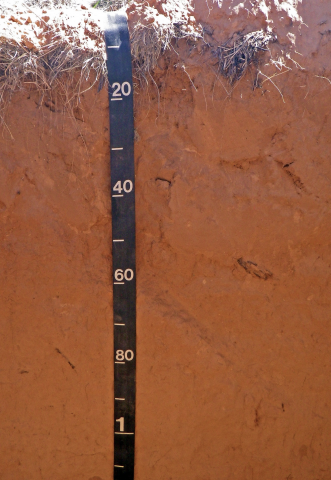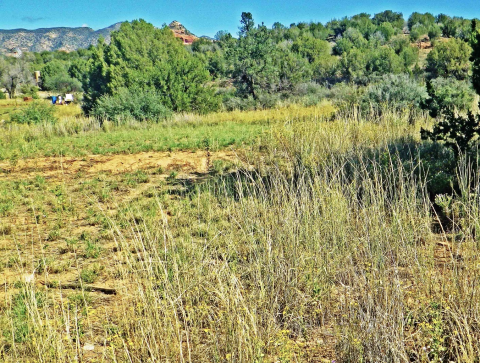You are here
Bradshaw Ranch

 Sitting in pinyon-juniper habitat beneath soaring red rock cliffs, at the junction of Hartwell Canyon and Loy Canyon, to the west of Sedona, Bradshaw Ranch was originally homesteaded in 1920. An adobe house from that period still stands on the grounds and is believed by some to be the oldest surviving structure in Sedona. Bob Bradshaw purchased the ranch in 1960 and in its heyday the ranch featured horseback riding, dinner & dancing, a petting zoo, cattle drives, a museum, gift store and historic wagon rides. One of the most picturesque parts of the Sedona area, the landscape around the Ranch may look very familiar – it was a key location for movie, TV and commercial production in the 1960s and 1970s.
Sitting in pinyon-juniper habitat beneath soaring red rock cliffs, at the junction of Hartwell Canyon and Loy Canyon, to the west of Sedona, Bradshaw Ranch was originally homesteaded in 1920. An adobe house from that period still stands on the grounds and is believed by some to be the oldest surviving structure in Sedona. Bob Bradshaw purchased the ranch in 1960 and in its heyday the ranch featured horseback riding, dinner & dancing, a petting zoo, cattle drives, a museum, gift store and historic wagon rides. One of the most picturesque parts of the Sedona area, the landscape around the Ranch may look very familiar – it was a key location for movie, TV and commercial production in the 1960s and 1970s.
As well as the historic adobe home there is also a much newer (now derelict) structure on the property, along with old corals and a defunct windmill. In May 2003 it became another parcel of federal Forest Service land. SEGA has a special use permit with the National Forest Service for up to 20 years to conduct long-term climate change research on up to 22 acres at the site.
The SEGA site fence encloses an area of old pasture/field & has a 900 ft deep well for water to the irrigation system – currently powered by a diesel generator. Directly to the east of the field site/exclosure is a small wash and then an area of upland pinyon juniper which could also be used for experiments.
As part of a cottonwood common garden experiment, 1000 Populus trichocarpa from the center of its natural range were planted in May 2016 (as well as at another site in Oregon)as part of a genome-wide association study (GWAS) is funded by the U.S. DOE BioSciences Energy Center and is coordinated by the Plant Molecular Biology Group at Oak Ridge National Laboratory (Lead PI Jerry Tuskan).
Site Characteristics Table
Garden name: Bradshaw Ranch
County: Yavapai
Latitude and Longitude: 34.91206635, -111.9296058
Nearest city: Sedona, Arizona
Elevation: 4,527 ft (1,380 m)
Annual Mean Air Temperature:
Annual Mean Precipitation: in ( mm)
On-site manager: Not currently.
Overnight housing: No
Parent Material: Basalt/sandy limestone
Water source: Well & pump
Dominant vegetation type: Pinyon juniper & old pasture/field
Weed species: Several including tumbleweed, tree-of-heaven,…
Mammalian herbivores: Rats and mice; there are javelina in the area; deer.
Other: Elk, cows, cougars, bees, rattlesnakes, scorpions
Cell phone service at site: Yes


The central part of the site is an old pasture that has been bladed. Remnants of old pasture with trees (mesquite and catclaw acacia) are around the edges. The surrounding low hills are pinyon juniper with a little riparian vegetation.
Total number of species: 87
Dominant species: Prosopis glandulosa (honey mesquite), Acacia greggii (catclaw acacia), Hesperostipa neomexicana (New Mexican feathergrass), Bromus rubens (foxtail brome)
Main associates: Berberis fremontii (Fremont's mahonia/barberry), Rhus aromatica (fragrant sumac), Eriogonum wrightii (Wright's buckwheat)
Theme by Danetsoft and Danang Probo Sayekti inspired by Maksimer
